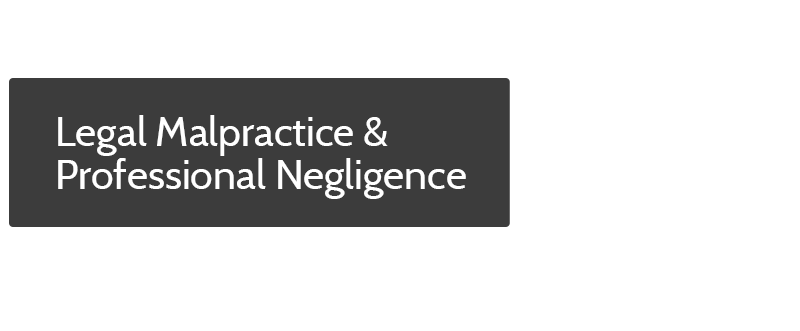Malpractice Liability to Non-Clients: What About Other Lawyers?
The last few posts have taken a look at circumstances when courts may find an attorney liable for malpractice when the plaintiff was not the attorney’s client (or otherwise in “privity of contract” with the lawyer).
Generally, an attorney only owes a professional duty of care to clients and other people with whom the lawyer has a contractual arrangement or agreement. (This is what courts mean by “privity of contract.”) However, courts have also held that when an attorney’s malpractice (also known as “professional negligence”) creates a sufficiently severe and sufficiently foreseeable likelihood of harm to non-clients, the attorney may have liability to certain non-clients as well.
Today, we look at some circumstances in which an attorney owes (or doesn’t owe) a duty of care to other lawyers in the malpractice setting.
NO SPECIFIC DUTY OF CARE TO CO-COUNSEL OR PREDECESSOR COUNSEL.
As a general rule, an attorney owes no special duty of care to co-counsel (aside from the shared duty of loyalty to the clients) or to predecessor counsel (meaning lawyers who represented the client before this attorney took over the representation). This means that lawyers cannot generally sue one another for malpractice in the handling of a shared client’s case.
THE DUTY TO INDEMNIFY CO-COUNSEL (AND OTHER ATTORNEYS).
When a client sues a lawyer for malpractice, but the malpractice was attributable to (or caused by, or resulting from) the malpractice of another attorney (generally, co-counsel) the defendant lawyer may seek indemnification from the other lawyer(s) at fault. (“Indemnification” is a legal term which means that one person or party must pay any costs or expenses incurred by another person or party as a result of the indemnifying person’s fault or actions.)
Where both attorneys committed malpractice, the court may choose to divide the liability between them. However, where one lawyer’s wrongful conduct was entirely caused by (or attributable to) the professional negligence of another lawyer, the court may order the “at fault” lawyer to bear the entire liability.
WHAT DOES THIS MEAN FOR PLAINTIFFS?
Generally speaking, a plaintiff client will need to determine which attorney (or attorneys) have primary responsibility for the legal malpractice. However, a client should not attempt to make this legally significant decision without assistance. When more than one lawyer has represented the client (in a single matter or in a series of matters and issues) it’s important to have an experienced malpractice attorney examine the situation, to determine whether more than one of the lawyers has responsibility for professional negligence committed in the course of the representation.
Plaintiffs may lose legal rights, or the ability to recover damages, by bringing suit against the wrong defendant(s) — or by not including all appropriate defendants in a malpractice action. For this reason, it’s important to consult an attorney immediately and to explain the malpractice claim as thoroughly as possible.
Never leave out details when talking with your lawyer. Let the attorney decide which facts are relevant and which are not. Otherwise, you may damage or lose your legal rights.
Do not use this or any other article or online source as a substitute for a consultation with experienced legal counsel. Always consult a practitioner promptly if you believe you may have a legal claim.
















